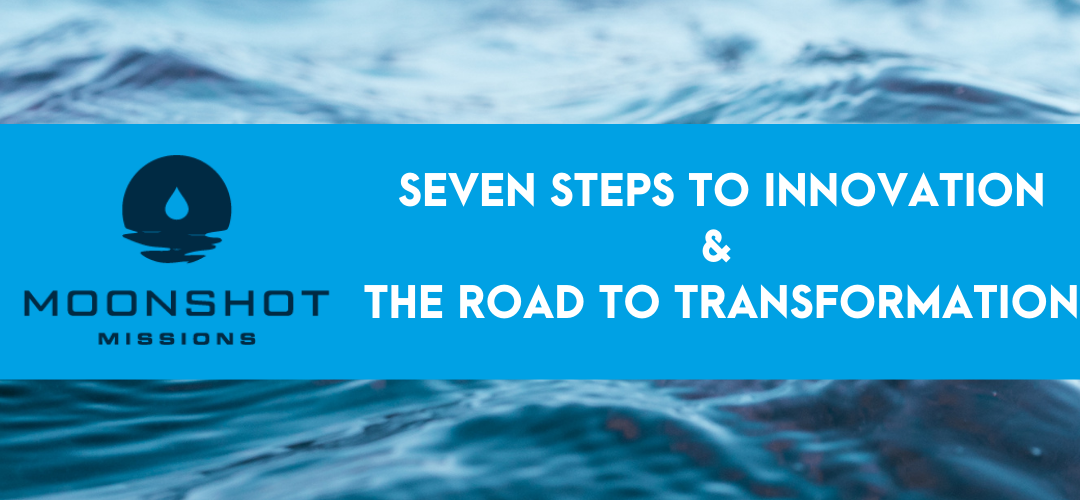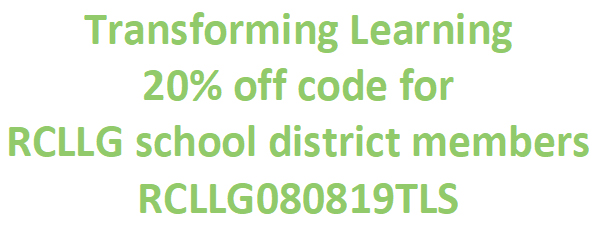This roadmap to innovation & transformation in seven steps was shared with us by our partner, George Hawkins, of Moonshot Missions. Enjoy & thanks for sharing, George!
The question is how to drive a transformation of an enterprise – whether it be an agency, division, department, or team. We are not focusing on what is the substance of the change, but the approach to encourage and foster a culture of change.
First – do your homework. Get to know the organization you are seeking to change. What is an organization’s history, key accomplishments and challenges, strengths and weaknesses, important people, and milestones? This preparation, which will shine during discussions, will show you respect the organization.
Second – listen first. Unless there is an emergency, DO NOT START WITH YOUR AGENDA! Conduct listening sessions with the staff first if possible, but certainly in parallel with key management. Learn the personal histories, language, and cadence of the organization. Do this regularly (“Inward in August” every year). Identify leaders in the organization, which is often less about their title and more about the respect they have and radiate.
Third – start measuring. To have good stories to tell to encourage the culture, start measuring the existing state of what you are doing – so you can also measure improvements as they come. Publish these measures if possible and use a colorful report-card like approach. Important to focus on outcome measures that matter to constituents, particularly as informed by the second step. Innovation or change is never for its own sake, but always to achieve important outcomes that are broadly supported.
Fourth – start inside. If possible, start a change agenda with quick internal wins focusing on issues that staff raised during the listening sessions. Staff needs to see that change starts with steps that improve their working conditions, and even better, if the change reflects ideas that have come from them. This is change with and for the team and its work, not being done to them. I started with small steps and a round of safety improvements.
Five – start the system. With the first three steps as a foundation, start building an innovation scheme based on outcomes. Integrate language and customs from the past with some new themes and ideas. If possible, start highlighting members of the team as your innovation chiefs. I hired one of the first full-time innovation chiefs in water. He was to encourage; identify and select which ideas we were going to embrace.
Six – celebrate people, not technology. At every step and as often as possible, shine a light on key personnel adopting change. Everyone is valued, everyone has a role. Examples: greeting each new employee and asking them to be ready to suggest change as soon as they are engaged with the jobs. Example: Video at DC Water on innovation was of an older employee who invented a new sewer pick (lifts manhole covers). Change is not just about software or digital services and the like – change relates to everything we do, everywhere, and all the time. Every activity of the organization is worth changing for the better, driven by ideas from people who know those activities the best.
Seven – market your case, building on measures that are important to your staff and constituents, tell the story based on outcomes and start building stakeholder support. Perhaps select a branding approach, and then start the cycle again. My suggestion – do not rebrand until after this process is in motion and there are good stories to tell. Rebranding absent change will seem hollow at best. Rebranding that is reflecting change that is happening can become a rallying cry. Example: DC WASA to DC Water and our new tag line: “Water is Life.” At every Board meeting, we highlighted an employee or team who had driven change in the organization, how we measured the improvement, and why it mattered. This culture caught on quickly and became a highlight each month, which was featured in the monthly newsletter and electronic video boards at each entrance. Always highlighting people, always spotlighting how our customers benefited, always encouraging more!
Keep going, start again, engage in all seven steps in parallel by constantly refreshing your homework on
your enterprise, regularly meeting with your teams, listening for the needs and ideas of the staff,
measuring your outcomes, highlighting new ideas and staff success, and presenting your success to the
people you serve. In this manner not only will you transform the enterprise, but you will also transform
how everyone – employees, potential employees, board members, stakeholders, advocates, media,
academics — sees and appreciates the enterprise and its people.
One you have a culture of change, and a wellspring of support, then extraordinary achievements
become possible.
– George S. Hawkins, Moonshot Missions
To learn more about George and the work of Moonshot Missions, visit their website!














